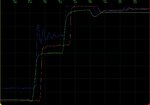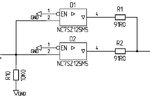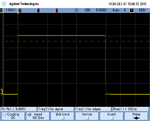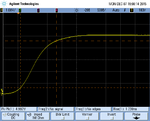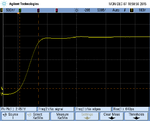eslavko
Junior Member level 2
- Joined
- Jan 22, 2010
- Messages
- 22
- Helped
- 0
- Reputation
- 0
- Reaction score
- 0
- Trophy points
- 1,281
- Location
- Slovenia, EU.
- Activity points
- 1,479
Hello....
Long time ago I build TDR. It has 47AC14 as pulse generator, but now I want to improve it. AC14 is just little to slow and has excsive ringing. I do search a lot and found that SRD is way to go. (Avalanche generator is other direction as I want step and not pulse) HC14 has no ringing but is slower too.
So SRD diode is not easy to get, and seems expensive to. Then I found one paper at https://www.adv-radio-sci.net/2/7/2004/ars-2-7-2004.pdf
that use BJT instead SRD for same functionality. But sadly there are no schematic how to connect transistor and I don't find solution yet. Basically I ned to put transistor into saturation and then reverse bias it. How to do with one signal?!?
Thanks
Long time ago I build TDR. It has 47AC14 as pulse generator, but now I want to improve it. AC14 is just little to slow and has excsive ringing. I do search a lot and found that SRD is way to go. (Avalanche generator is other direction as I want step and not pulse) HC14 has no ringing but is slower too.
So SRD diode is not easy to get, and seems expensive to. Then I found one paper at https://www.adv-radio-sci.net/2/7/2004/ars-2-7-2004.pdf
that use BJT instead SRD for same functionality. But sadly there are no schematic how to connect transistor and I don't find solution yet. Basically I ned to put transistor into saturation and then reverse bias it. How to do with one signal?!?
Thanks
